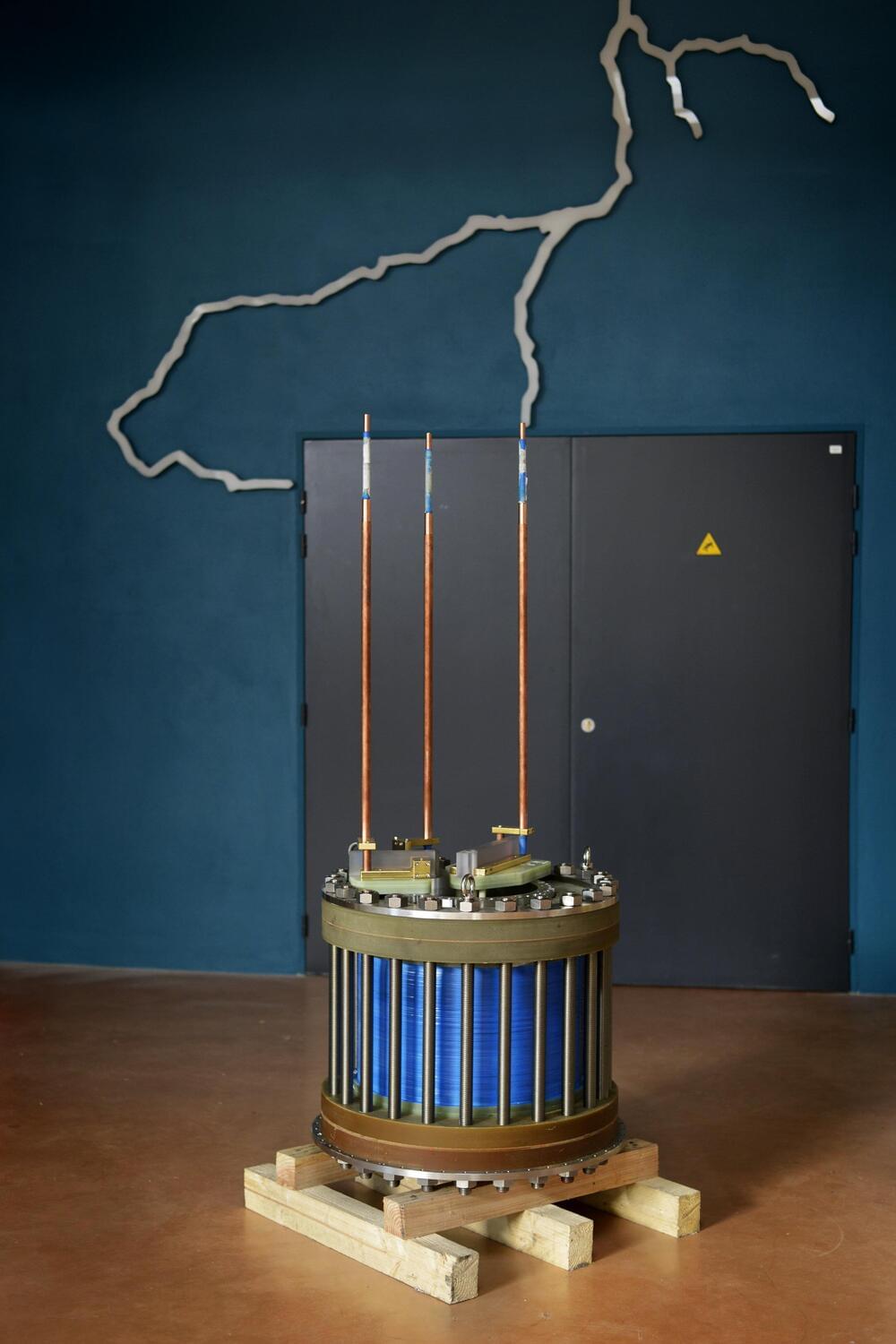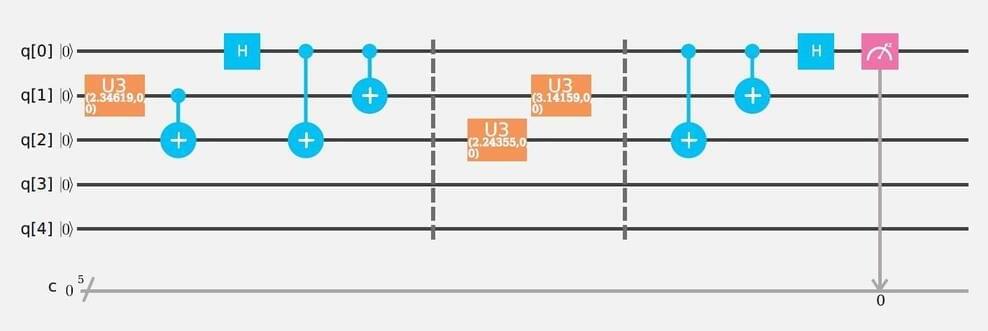A team of physicists has entangled three photons over a considerable distance, which could lead to more powerful quantum cryptography.



Marking the passage of time in a world of ticking clocks and swinging pendulums is a simple case of counting the seconds between ‘then’ and ‘now’.
Down at the quantum scale of buzzing electrons, however, ‘then’ can’t always be anticipated. Worse still, ‘now’ often blurs into a haze of uncertainty. A stopwatch simply isn’t going to cut it for some scenarios.
A potential solution could be found in the very shape of the quantum fog itself, according to researchers from Uppsala University in Sweden.
How does something as immaterial as consciousness arise from something as unconscious as matter?
This is known as the Hard Problem and this theory gets around this problem by explaining consciousness as electrical activity that is aware of its own electrical potential. This is possible because the light photon is the carrier of the electromagnetic force. Because light has momentum and momentum is frame dependent electrical activity in the brain is always in the centre of its own reference frame in ‘the moment of now’ with a potential future that is always uncertain and a past that has gone forever. It is because consciousness is always in the centre of its own reference frame that we have the concept of ‘mind’ with each one of us having our own personal view of the Universe. This is within a process formed by the spontaneous absorption and emission of light a process of continuous energy exchange forming the ever changing world of our everyday life. If our eyes where more sensitive to light we would be able to see that everything is radiating EMR or light continuously because the Universe is never at absolute zero.
In this theory consciousness is the most advanced part of a universal process that can be explained by physics. There are no paradoxes in this theory! We are in the centre of our own reference frame being able to look back in time in every direction at the beauty of the stars. We can also look down into individual reference frames seeing the future unfold photon by photon relative to that frame of reference.
The greatest affect this process of continuous energy exchange has on us is the aging process with photon energy from the Sun cascading down forming greater degrees of freedom for the continuous increase in entropy or disorganization.
But above all this is a creative process with the future coming into existence relative to the energy and momentum or actions of each individual life form. The wave-particle duality of light is acting like the bits or zeros and ones of a computer. This forms a blank canvas for life to form its own future relative to its position and the energy and momentum of its own actions. The Universe is a continuum with spacetime as an emergent property with an Arrow of Time for each object or life form with a future coming into existence relative to their energy & momentum with each new photon electron coupling or dipole moment.
I believe this is what we are seeing when we see an artist at work we are seeing the future unfolding relative to the energy and momentum of the artist!
In this theory creation is truly in the eye and hand of the beholder!
Thanks for watching please share and subscribe on YouTube and be part of the promotion of this theory!
Find me on Facebook https://www.facebook.com/nick.harvey.1806
Link to my web site: http://quantumartandpoetry.blogspot.co.uk/
Link to: A new interpretation of Quantum Mechanics on Facebook.
https://www.facebook.com/groups/280524372113402/
Quantum Atom Theory on facebook with diagrams and scientific experimental videos:
https://www.facebook.com/QuantumAtomTheory/
The Schrodinger’s Cat Thought Experiment Explained by QAT
Physics-Astronomy.com, TheSpaceAcademy, Physics, Quantum, Technology, BlackHole.



Strange metals, or non-Fermi liquids, are distinct states of matter that have been observed in different quantum materials, including cuprate superconductors. These states are characterized by unusual conductive properties, such as a resistivity that is linearly associated with temperature (T-linear).
In the strange metal phase of matter, electrons undergo what is known as “Planckian dissipation,” a high scattering rate that linearly increases as the temperature rises. This T-linear, strong electron scattering is anomalous for metals, which typically present a quadratic temperature dependence (T2), as predicted by the standard theory of metals.
Researchers at Université de Sherbrooke in Canada, Laboratoire National des Champs Magnétiques Intenses in France, and other institutes worldwide have recently carried out a study exploring the possibility that the resistivity of strange metals is not only associated with temperature, but also with an applied magnetic field. This magnetic field linearity had been previously observed in some cuprates and pnictides, with some physicists suggesting that it could also be linked to Planckian dissipation.

For the first time, a group of researchers from Universidad Complutense de Madrid, IBM, ETH Zurich, MIT and Harvard University have observed topological phases of matter of quantum states under the action of temperature or certain types of experimental imperfections. The experiment was conducted using quantum simulator at IBM.
Quantum simulators were first conjectured by the Nobel Prize laureate Richard Feynman in 1982. Ordinary classical computers are inefficient at simulating systems of interacting quantum particles These new simulators are genuinely quantum and can be controlled very precisely. They replicate other quantum systems that are harder to manipulate and whose physical properties remain very much unknown.
In an article published in the journal Quantum Information, the researchers describe using a quantum simulator with superconducting qubits at IBM to replicate materials known as topological insulators at finite temperature, and measure for the first time their topological quantum phases.

Improved fabrication methods for qubits made from erbium-doped silicon waveguides give these qubits the key prerequisites for becoming a contender for future quantum computers.
From superconducting circuits to single atoms, there are many quantum-bit—or “qubit”—systems to choose from when building a quantum computer. New to the game are qubits made from individual erbium atoms implanted in silicon waveguides. Each of these qubits can be controlled and measured with telecom-wavelength light, making the platform practical to implement. But the platform has unfavorable properties that have put that implementation on hold. Now Andreas Reiserer of the Max Planck Institute of Quantum Optics in Germany and his colleagues have improved the qubit’s fabrication and detection methods, such that it is viable for near-future use in quantum computing technologies [1]. The results suggest that erbium-doped silicon waveguides could make more promising qubits than previously thought.
One problem with previous erbium-doped silicon waveguides came from the uneven clustering of erbium atoms around impurities in the waveguide. This clustering meant that the erbium atoms had different transition frequencies, making it difficult to simultaneously address multiple atoms and to perform basic operations between them—a necessary component of quantum information processing.
